Enjoy your Lightswing® right away
So you have time to think about it
We'll prepare your order the same day
Enjoy your Lightswing® right away
So you have time to think about it
We'll prepare your order the same day
At the end of the Lightswing® you can mount the supplied Screw eye. To this you can then attach the chain or steel wire of the lamp.
Is your Lightswing® no longer rotating? Then your Lightswing® has gotten stuck in the spin-through protection. You can get the Lightswing® loose by turning it the other way. But which way was that again? We have created a handy too
l for you so you can enjoy flexible pendant lights again in no time.
To prevent damage to the cords of the Lightswing®, it comes with a spin-through protection. This is activated when the Lightswing® is repeatedly turned in the same direction when being moved. Over time, this can cause the Lightswing® to become completely stuck.
Using the Block Release, you can easily rotate your Lightswing® freely again. In the PDF below you will find the Block Release with simple instructions. Print it out and follow the steps carefully to quickly enjoy your flexible pendant lights again.

Can’t get the Lightswing® moving again using the Block Release? We are happy to think with you. Feel free to get in touch with us or use our Lightbot!
Sustainability is an important topic that you see more often. But what exactly is sustainability? And what steps is Lightswing® taking in the field of sustainability? We will give you an explanation of the question in this blog.
Sustainability is often explained based on the 3 Ps of People, Profit and Planet. In short, sustainability means that people, the economy and nature are in balance. This so that the earth is not depleted. Living more sustainably, but also doing business more sustainably, therefore helps to save our living environment for future generations.
Lightswing® also contributes to a more sustainable world. For example, we have ensured that the Lightswing® is 100% recyclable, that as little plastic as possible is used in the Lightswing® packaging and that the shipment of the Lightswing® ensures less CO2 emissions than faster, but less sustainable alternatives. Are you reading along?

At the beginning, a few pieces of plastic packaging could be located in the Lightswing® box that you as a customer received at home. That is no longer the case. The plastic packaging of the mounting ring and the covers have been replaced by cardboard boxes made of FSC-certified cardboard. The Lightswing® itself was also delivered in plastic packaging. But that plastic packaging has now been replaced by a black fabric cover. This fabric cover can be stored and is ideal for reuse! Here you can, for example, transport or store other objects. Like your tent poles, which you normally always lose, for example! 😉
Lightswing®’s products are transported to the Netherlands by boat. This takes longer than when the products are transported in a truck or by plane. But, on the other hand, it also causes less CO2 emissions. With a little patience and good planning, we ensure that we have enough Lightswings® in stock, so that you do not have to wait long.
In both old and new homes, ceiling ornaments or rosettes are common and often positioned in the center of the room, making them ideal for hanging a beautiful pendant lamp. However, what if the center isn’t where you want your lamp to hang? No worries! The Lightswing® suspension system allows you to hang your lamp adjacent to the ornament without any dangling cables or messy finishes, preserving the neat appearance of your space.
Securing the Lightswing®:
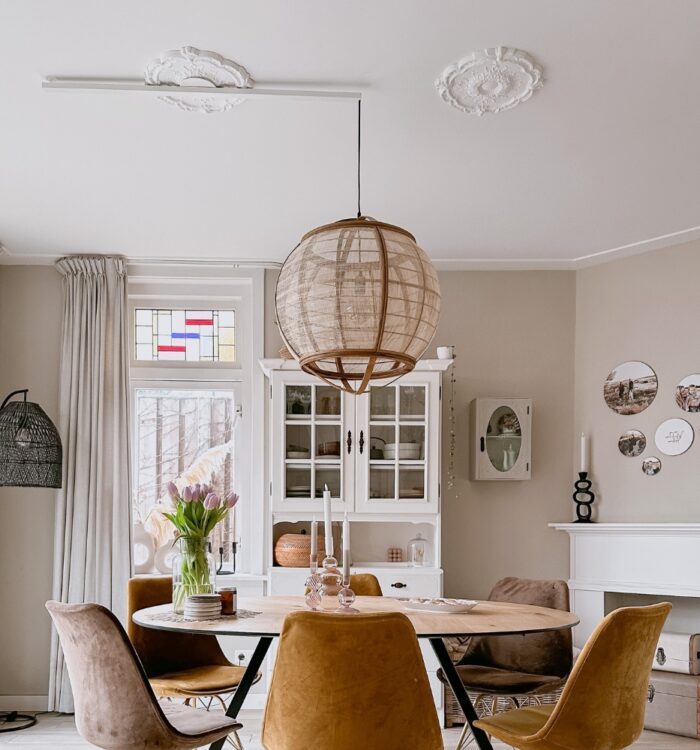
Ornamental focus: A ceiling ornament enhances a room with a touch of classic and romantic aesthetics. By utilizing the Lightswing® to hang a pendant light, you not only spotlight this ornamental feature but also blend traditional charm with contemporary design, creating a luxurious focal point that commands attention.
Versatile placement:
Aesthetic and practical benefits:
Explore the possibilities with Lightswing® and learn how effortlessly you can enhance your room’s design while focusing on functionality. Whether it’s spotlighting an antique rosette or optimizing light placement in your living space, the Lightswing® offers a sophisticated solution to interior lighting challenges.
Beautiful, isn’t it? Lots of natural light in the living room or dining room through that beautiful skylight. During the summer, a skylight brings in additional light to spaces. In contrast, during autumn and winter, a skylight becomes a nice addition. However, during this period there is significantly less natural light entering the interior. It would be beneficial to have an additional light source in this area during these seasons. But how can you conveniently install a lamp in this location?
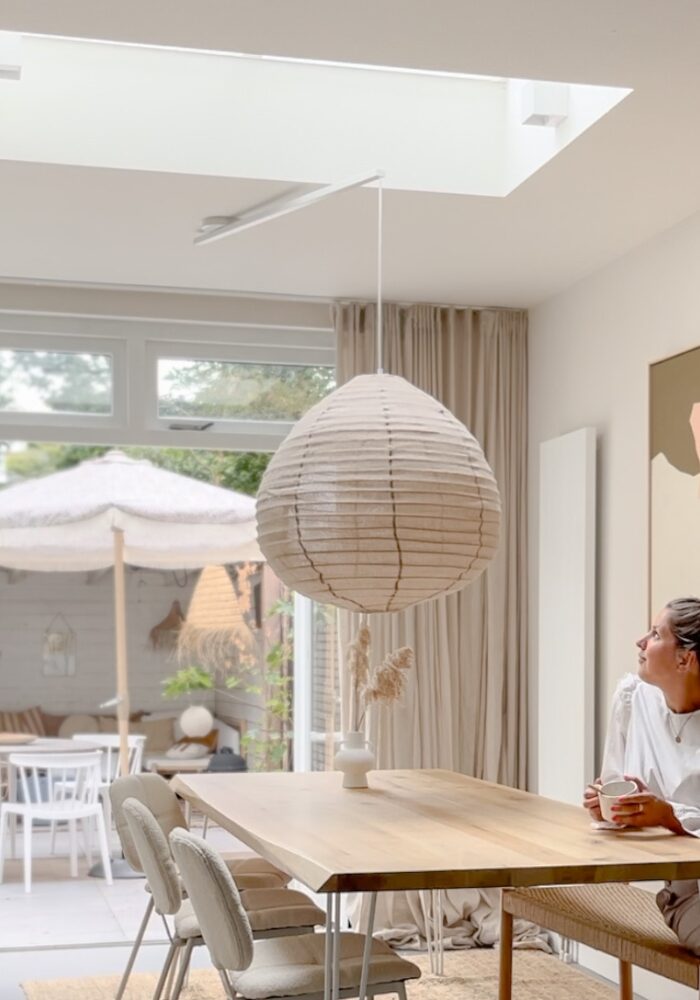
The obvious solution is to place a lamp on the ceiling, just next to the skylight. That is certainly possible, but when your dining table is exactly in the middle under the skylight, that lamp does not hang directly above it.
And how nice would it be if you could just hang the pendant lamp nicely in the middle, without having to put a lot of effort into it?
Hanging your lamp under a skylight is easy with the Lightswing®. With the Lightswing® suspension system for lamps, you are a lot less dependent on the original location of the light point. In addition, you create many more possibilities to hang lamps, where there is currently no light point. Like under the skylight, for example.
The flexible suspension system connects you to the current light point on your ceiling. You attach the pendant light to the end of the Lightswing®, so you can move it to another place later. Depending on which Lightswing® you choose, your pendant light can be moved up to 93 cm from this attachment point. The system is attached to the ceiling at one point and can also rotate and slide freely so, you can also slide the lamp to a place where there is no ceiling above.
The Lightswing® suspension system can be used with one or two pendant lights. In addition, you can choose from 3 colours and 2 lengths. Curious about where else a Lightswing® can come in handy? Visit our inspiration page and find out!
Hang a pendant light in seconds. This is possible with the Lightswing® on your ceiling. Huh? Yes, really! You’ll never be messing around in the air hanging a lamp again. And that saves time and annoying situations.
After the Lightswing® hangs, attach the lamp to the Quick Release. This Quick Release is an intermediate piece that you can easily click into the Lightswing®. And as the name ‘Quick’ says, attaching your lamp to the Lightswing® is nice and fast. Handy, right?
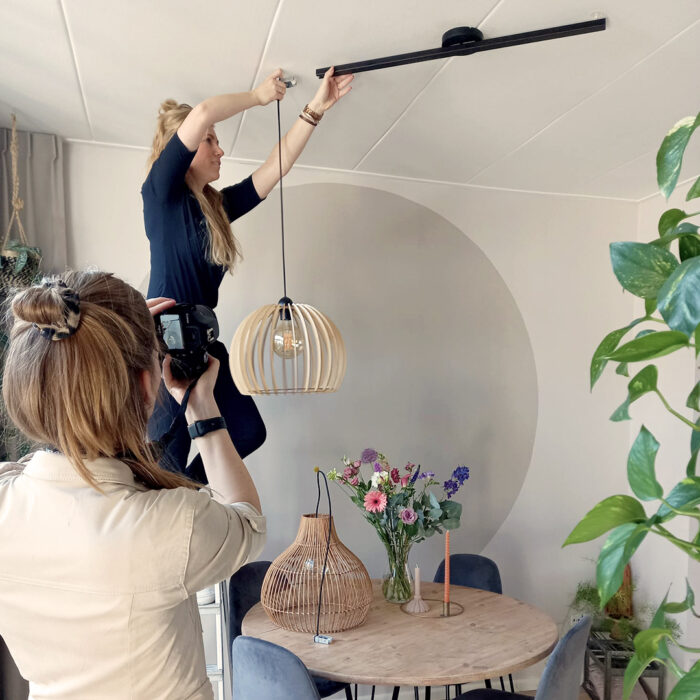
First things first. To be able to hang a lamp without difficulty, it is useful to attach a Lightswing® to your ceiling. Then you can use this hanging system for pendant lights – with one click! – hang a new lamp. Curious how that works exactly? Read on!
You can ‘mount’ your lamp to the Quick Release while sitting at the kitchen table. That saves fumbling on the stairs with your hands full of tools. In the step-by-step plan below you can read how attaching the lamp to the Quick Release works:
Watch the video ‘attaching a lamp cord to the Lightswing®‘ to see what the above steps look like.
Have you attached the lamp cord to the Quick Release? Beautiful! Then it’s time to hang your lamp on the Lightswing®. This time with a lamp, go up the stairs. Hassle with wires and screwdrivers is no longer an issue. You slide the Quick Release into the end of the Lightswing® and voilà: your lamp hangs!
Do you want to temporarily remove the lamp because it hangs in the way? That too is quickly done! Disconnect the Quick Release from the Lightswing® and store your lamp. Shop your Lightswing® now!
During the assembly of the Lightswing® you must make a choice whether you use the mounting ring or not. Curious when you use or do not use the mounting ring when mounting the Lightswing®? We explain it to you in this blog.

Mounting location of the Lightswing®
Whether or not you should use the mounting ring depends, among other things, on the place where you want to attach the Lightswing®.
Lightswing® over a central box
If you want to attach the Lightswing® to the place where the current central box is located, you do not need the mounting ring. The Lightswing® can be mounted tightly to the ceiling. The electricity cables and crown stones can easily be hidden in the central box.
Lightswing® over a cable from the ceiling
Do you not want to mount the Lightswing® suspension system over a central box, but on a separate electricity cable from your ceiling? Then you do need the mounting ring. The mounting ring is needed so that you can cleverly hide the cable from the ceiling. There is enough space for this in the mounting ring. You then screw the Lightswing® against the mounting ring.
Lightswing® anywhere
Do you mount the Lightswing® anywhere on your ceiling where there is no light connection yet? Even then, the mounting ring is needed. In the mounting ring there is a small recess that you can push out of the mounting ring. For example, you can pass an electrical wire through the mounting ring. Then connect the Lightswing® to the electricity cable and screw the suspension system to the mounting ring.
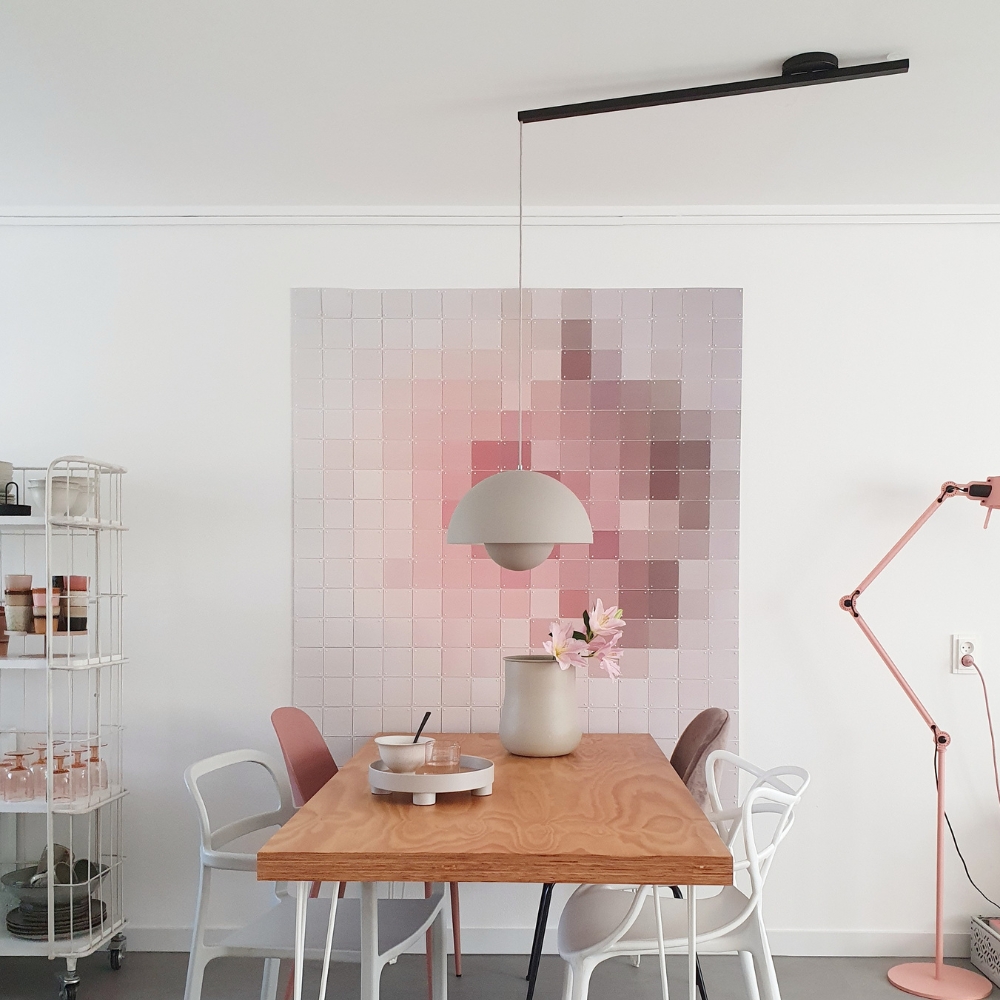
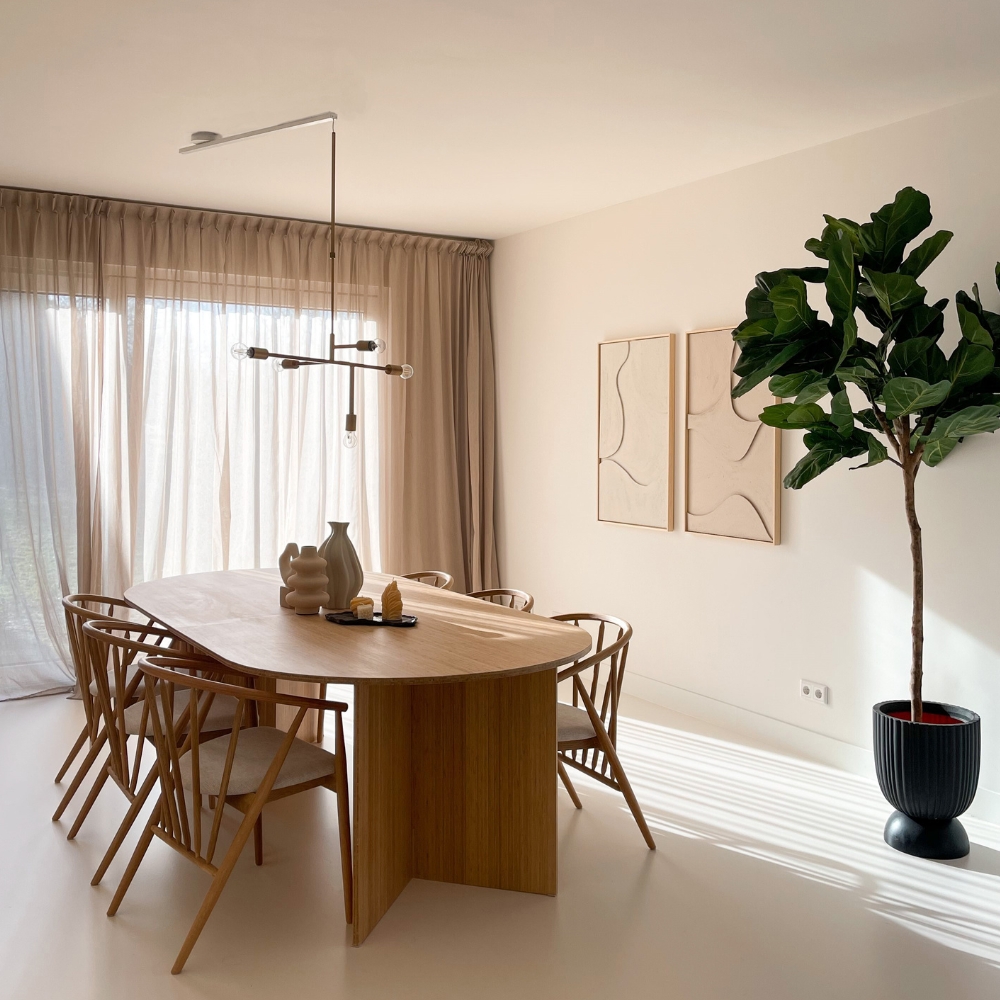
In addition to the mounting spot, it is also important to check whether your ceiling is straight and whether the finish of your ceiling lends itself to a Lightswing® without or with a mounting ring.
Straight ceiling
When you attach the Lightswing® to your ceiling without the mounting ring in between, the Lightswing® is tightly mounted against the ceiling. Does your ceiling slope a little bit or is your ceiling not completely straight here and there? This can cause the Lightswing® to not slide optimally. When you place the mounting ring between the ceiling and the Lightswing®, there is 2 cm between the Lightswing® and the ceiling. For example, it is not a problem if the ceiling is slightly uneven where the suspension system will hang.
Ceiling finish
Often ceilings are nice and sleek and evenly finished. With such a sleek finish, it is often not necessary to use the mounting ring. Depending on where you attach the Lightswing® of course. Do you have a packed ceiling at home? Then it can be nice to mount the Lightswing® with a mounting ring. This way you can be sure that the Lightswing® does not rub along your ceiling.
Whether or not to use the mounting ring depends on where you attach the Lightswing® and on the ceiling to which the system is attached. Would you like to know more about the Lightswing® mounting? Check out our assembly page.
Have you bought a new dining table pendant light and are you curious how high a pendant light should hang above the dining table? There is a rule of thumb for this, but the height of your dining table pendant light also depends on the type of pendant lamp and the size of the pendant lamp. We’ll tell you everything you need to know in this blog.
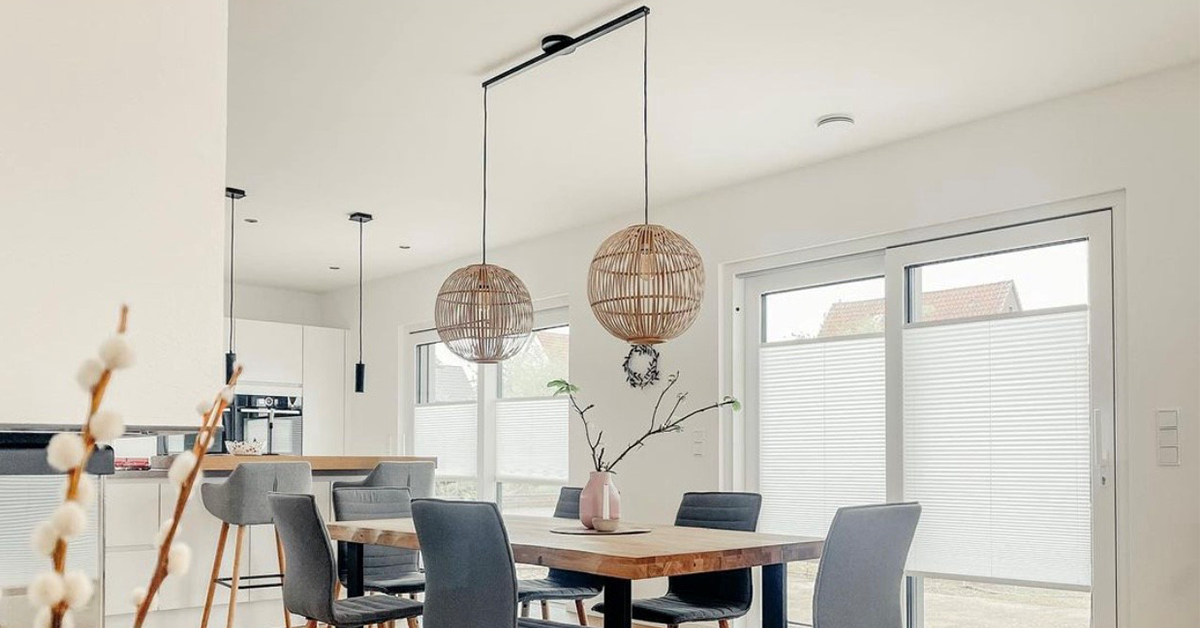
The height of the lamp is the most important thing to consider when hanging a pendant light above the dining table. The rule of thumb for a lamp above the table is 75 cm. The distance between the tabletop and the bottom of the lamp is 75 cm. However, this is not always the ideal height. Because what if the pendant lamp only illuminates a small part of the table? Or does the lamp not give good light at all, so you do not see what is on your plate in the evening?
First, make a conscious choice between an open or a closed lampshade. A pendant light above the table with an open lampshade provides atmospheric lighting throughout the room. That is ideal when you have a large kitchen. When you choose a closed lampshade, you can centre the light much better in one place. The light then shines on the kitchen table and less to the rest of the room. In this case, hang your lamp a little higher, so that you can illuminate a larger part of the table with the same lamp.
You can choose a pendant light in varied sizes, colours and shapes. How high you hang a pendant light above the dining table also depends on the size of the pendant light. Smaller pendant lights can often be hung a little lower above the table. That is, about 55 cm above the table. With larger lamps, it is wise to stick to the rule of thumb of 75 cm. Are you hanging multiple lamps above the dining table? Make sure the distance between the lamps is at least 80 cm.
Do you simply want to hang two pendant lights above the dining table? With the help of the Lightswing® suspension system you can easily hang two lamps above the table. Curious? Discover the Lightswing® now.